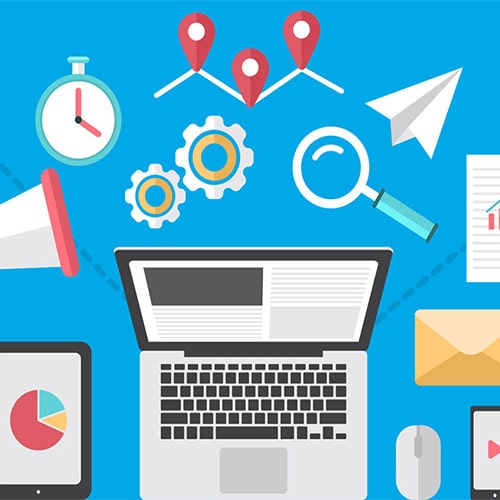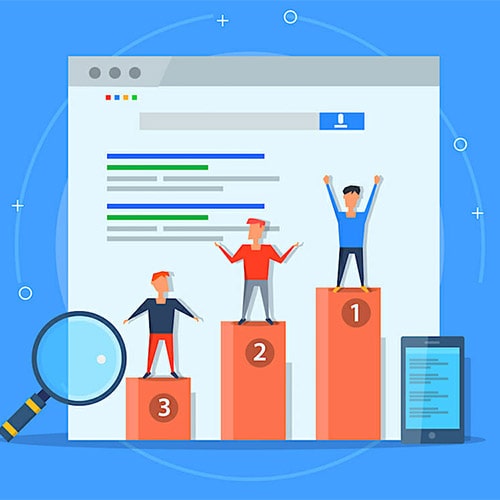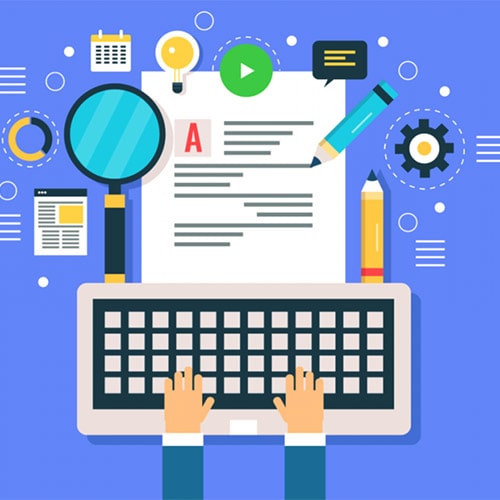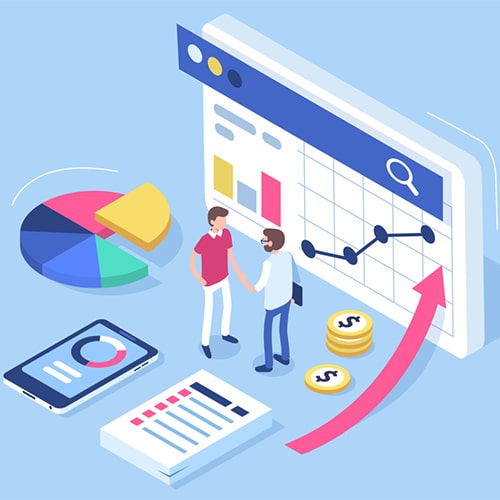Project Material on; Assessing utilization of e-learning resources and multimedia technologies for learning enhancement among technical and vocational education students in tertiary institutions, Bauchi State
Categories
-
ACCOUNTING PROJECT TOPICS AND MATERIALS47
-
ACCOUNTING EDUCATION PROJECT TOPICS AND MATERIALS6
-
ADULT EDUCATION PROJECT TOPICS AND MATERIALS7
-
ACTUARIAL SCIENCE PROJECT TOPICS AND MATERIALS6
-
AGRICULTURAL EXTENSION PROJECT TOPICS AND MATERIALS49
-
ANATOMY PROJECT TOPICS AND MATERIALS5
-
ARCHITECTURE PROJECT TOPICS AND MATERIALS39
-
AGRICULTURAL SCIENCE PROJECT TOPICS AND MATERIALS48
-
ANIMAL SCIENCE PROJECT TOPICS AND MATERIALS49
-
AFRICAN LANGUAGES PROJECT TOPICS AND MATERIALS7
-
BANKING AND FINANCE PROJECT TOPICS AND MATERIALS49
-
BUSINESS ADMINISTRATION PROJECT TOPICS AND MATERIALS45
-
BUSINESS MANAGEMENT PROJECT TOPICS AND MATERIALS23
-
BUSINESS EDUCATION PROJECT TOPICS AND MATERIALS17
-
BIBLICAL AND THEOLOGY PROJECT TOPICS AND MATERIALS35
-
BIOCHEMISTRY PROJECT TOPICS AND MATERIALS48
-
BIOLOGY PROJECT TOPICS AND MATERIALS59
-
BREWING SCIENCE PROJECT TOPICS AND MATERIALS3
-
BUILDING AND TECHNOLOGY PROJECT TOPICS AND MATERIALS50
-
COMPUTER SCIENCE PROJECT TOPICS AND MATERIALS47
-
CHEMISTRY PROJECT TOPICS AND MATERIALS35
-
COMMERCE PROJECT TOPICS AND MATERIALS25
-
COMPUTER SCIENCE EDUCATION PROJECT TOPICS AND MATERIALS17
-
CURRICULUM STUDIES PROJECT TOPICS AND MATERIALS3
-
CIVIL ENGINEERING PROJECT TOPICS AND MATERIALS49
-
CHEMICAL ENGINEERING PROJECT TOPICS AND MATERIALS50
-
ECONOMICS PROJECT TOPICS AND MATERIALS50
-
EDUCATION PROJECT TOPICS AND MATERIALS49
-
ENGLISH PROJECT TOPICS AND MATERIALS49
-
ELECTRICAL & ELECTRONICS PROJECT TOPICS AND MATERIALS58
-
ENVIRONMENTAL SCIENCE PROJECT TOPICS AND MATERIALS52
-
ESTATE MANAGEMENT PROJECT TOPICS AND MATERIALS52
-
ENTREPRENEURSHIP PROJECT TOPICS AND MATERIALS52
-
FOOD SCIENCE & TECH. PROJECT TOPICS AND MATERIALS52
-
FINE & APPLIED ARTS PROJECT TOPICS AND MATERIALS43
-
FISHERY & AQUACULTURE PROJECT TOPICS AND MATERIALS50
-
FORESTRY & WILDLIFE PROJECT TOPICS AND MATERIALS5
-
GUIDANCE AND COUNSELING PROJECT TOPICS AND MATERIALS50
-
GEOGRAPHY PROJECT TOPICS AND MATERIALS53
-
GEOLOGY PROJECT TOPICS AND MATERIALS43
-
HUMAN RESOURCE MANAGEMENT PROJECT TOPICS AND MATERIALS53
-
HEALTH & SEX EDUCATION PROJECT TOPICS AND MATERIALS24
-
HOME ECONOMICS PROJECT TOPICS AND MATERIALS49
-
HUMAN KINETICS PROJECT TOPICS AND MATERIALS20
-
INFORMATION TECHNOLOGY PROJECT TOPICS AND MATERIALS33
-
INDUSTRIAL CHEMISTRY PROJECT TOPICS AND MATERIALS31
-
INSURANCE PROJECT TOPICS AND MATERIALS50
-
INTERNATIONAL RELATIONS PROJECT TOPICS AND MATERIALS50
-
ISLAMIC & ARABIC STUDIES PROJECT TOPICS AND MATERIALS4
-
LAW PROJECT TOPICS AND MATERIALS51
-
LIBRARY SCIENCE PROJECT TOPICS AND MATERIALS50
-
MARKETING PROJECT TOPICS AND MATERIALS50
-
MASS COMMUNICATION PROJECT TOPICS AND MATERIALS50
-
MATHEMATICS EDUCATION PROJECT TOPICS AND MATERIALS9
-
MICRO BIOLOGY PROJECT TOPICS AND MATERIALS50
-
MARINE AND TRANSPORT PROJECT TOPICS AND MATERIALS7
-
MECHANICAL ENGINEERING PROJECT TOPICS AND MATERIALS48
-
NURSING PROJECT TOPICS AND MATERIALS50
-
OFFICE TECHNOLOGY PROJECT TOPICS AND MATERIALS51
-
PUBLIC ADMINISTRATION PROJECT TOPICS AND MATERIALS49
-
POLITICAL SCIENCE PROJECT TOPICS AND MATERIALS50
-
PSYCHOLOGY PROJECT TOPICS AND MATERIALS49
-
PHILOSOPHY PROJECT TOPICS AND MATERIALS50
-
PHYSICS PROJECT TOPICS AND MATERIALS30
-
PROJECT MANAGEMENT PROJECT TOPICS AND MATERIALS10
-
PHARMACY PROJECT TOPICS AND MATERIALS38
-
PURCHASING & SUPPLY PROJECT TOPICS AND MATERIALS51
-
PRODUCTION & OPERATIONS MGT. PROJECT TOPICS AND MATERIALS23
-
PETROLEUM ENGINEERING PROJECT TOPICS AND MATERIALS72
-
QUANTITY & SURVEYING PROJECT TOPICS AND MATERIALS45
-
RELIGIOUS & CULTURAL STUDIES PROJECT TOPICS AND MATERIALS17
-
SOCIAL STUDIES PROJECT TOPICS AND MATERIALS12
-
SCIENCE LABOURATORY PROJECT TOPICS AND MATERIALS50
-
SOIL SCIENCE PROJECT TOPICS AND MATERIALS11
-
SOCIOLOGY PROJECT TOPICS AND MATERIALS55
-
STATISTICS PROJECT TOPICS AND MATERIALS51
-
THEATRE ARTS PROJECT TOPICS AND MATERIALS14
-
TOURISM & HOSPITALITY PROJECT TOPICS AND MATERIALS34
-
URBAN & REGIONAL PLANING PROJECT TOPICS AND MATERIALS63
-
VOCATIONAL STUDIES PROJECT TOPICS AND MATERIALS43
-
VETERINARY PROJECT TOPICS AND MATERIALS2
-
ZOOLOGY PROJECT TOPICS AND MATERIALS12
-
EDUCATIONAL TECHNOLOGY PROJECT TOPICS AND MATERIALS28
-
APPLIED SCIENCE PROJECT TOPICS AND MATERIALS2
-
CRIMINOLOGY PROJECT TOPICS AND MATERIALS0
-
COMPUTER ENGINEERING PROJECT TOPICS AND MATERIALS0
-
FRENCH PROJECT TOPICS AND MATERIALS0
-
HISTORY PROJECT TOPICS AND MATERIALS0
-
INDUSTRIAL RELATIONS & PERSONNEL MGT PROJECT TOPICS AND MATERIALS39
-
PHYSIOLOGY PROJECT TOPICS AND MATERIALS0
-
MEDICINE PROJECT TOPICS AND MATERIALS0
-
SECRETARIAL STUDIES PROJECT TOPICS AND MATERIALS0
-
PUBLIC HEALTH PROJECT TOPICS AND MATERIALS0
EDUCATIONAL TECHNOLOGY PROJECT TOPICS AND MATERIALS
Project Material on; Assessing utilization of e-learning resources and multimedia technologies for learning enhancement among technical and vocational education students in tertiary institutions, Bauchi State
Project Material on; Assessing utilization of e-learning resources and multimedia technologies for learning enhancement among technical and vocational education students in tertiary institutions, Bauchi State
CHAPTER
ONE
INTRODUCTION
1.1
Background of
the Study
Tertiary education is the capstone
of the development of any nation. As the apex of educational structure, it is a
critical pillar of human development which provides a life-long learning
framework for training high-level skilled human capital resources in all
spheres of life namely, teachers, doctors, nurses, civil servants, engineers,
humanities, entrepreneurs, scientists, myriad of personnel
(Aduwa-Ogiegbaen&Imogie, 2005). Tertiary education depends on availability
of learning facilities current and relevant resources. With the advent of
globalization and information revolution, education is expected to create
intellectual capacity on which knowledge production and utilization depends on.
It is also expected to play a key role in promoting life-long learning
practices that is necessary for updating people’s knowledge and skills. To
achieve this, tertiary institutions need to prove adequate, current, relevant
teaching and learning resources with technological integration for students and
lecturers.
Empirical evidences have shown that
inadequate educational resourcesis a major problems facing tertiary
institutions in Nigeria. Odogwu (2008) posits that the problems that weaken
African schools include financial constraints, lack of human resources and
inadequate materials. The authors added that most institutions have outdated
books and journals in their shelves. Odini (2016) avers that low budget makes
it difficult for schools to provide optimum resources for their users. The
inability of tertiary institutions to stock their libraries with relevant
materials has a great implication for teaching, learning research and
development. Omekwu (2004) maintains that it is difficult for a single
institution to have all the resources it requires to meet the information needs
of its actual and potential clientele.
The author proffers solution through resource sharing whereby people can
share online database, electronic journals, online reference tools, web
resources, electronic books, multimedia and hypermedia facilities etc.
E- learning according to Wikipedia
(2010) is the use of electronic media and information communication
technologies (ICT) in education which includes all forms of educational technology
in learning and teaching. E-learning is synonymous with multimedia learning,
technology enhanced learning (TEL), computer-based interactions (CBL), computer-based
training (CBT), computer assisted instruction (CAI), internet-based learning
(IBL), web-basedtraining (WBT), online education, virtual education, virtual
learning environment (VLE) (which is also called learning platforms), and digital
educational collaboration (DEC). According to Jackson, (2001) e-learning
materials, ask questions, submit assignments and receive corrections
electronically. Nwako (2008) posits with the e-learning facilities, educational
resources sharing can be done globally.
e-learning resources or electronic
learning resources according to Cristopher are digital learning resources
deliverymedia formalized through electronic devices such as computers, tablets,
and even cellphones that are connected to the internet. Examples of e-learning
resources include YouTube, Coursera, Lynda, Udemy, Alison, Khan Academy, MIT
open courseware, Masterclass, Zoom, NLP etc.
Multimedia technology is described
as the integration of sound, animation, and digitized video with more traditional
types of data such as text. It is an application-oriented technology that is
used in a variety of ways, for example, to enhance presentations, and based on
the increasing capacity of computers to store, transmit, and present many types
of information (Stankovic, Sejdic&Orovic 2016).
Multimedia technology is the field
concerned with the computer-controlled integration of text, graphics, drawings,
still and moving images (video), animation, audio, and any other media where
every type of information can be represented, stored, transmitted and processed
digitally (Zeng, El-Sadik, & Jiang 2017).
The adoption of e-learning as a
platform for resource sharing largely depends of technological skills of the
users. Okoli and Ifeakor (2011) reported that technological skills is basic
requirement for e-learning adopting. However, study conducted by Ekuk (2007)
shows that most lecturers and students find it difficultto operate computers
due to inadequate skills. Similarly, Adamu (2010) reported that even in this age
of information revolution made possible by computer, most lecturers and
students still rely on and massively adopt the orthodox typewriters and
outdated books. Oluwatobi (2017) noted that most lecturers and students have
limited computers word processing skills needed in the 21st century
educational revolution. Akuegwu&Ntukidem (2011) noted the utilization of
ICT and computer facilities for quality instructional service delivery hampered
by inadequate skills of the lecturers and students. This situation let and motivate the
researcher to carry out this study.
1.2
Statement of
the problem
The booming of social network platforms for
business activities has not been enjoy for teaching and learning processes
among youths in developing countries (McKinsey, 2016). Social media helps to
better understand their audience by their likes and dislikes. Study conducted
by Oxvevad (2013) reported that most tertiary institutions students use social
and multimedia elements for charting and watching videos, but lacks basic skills
for generating online materials for assignments and collaborative learning. Joseph
(2017) stated that most students waste their own time using social and
multimedia technologies for charting, downloading and watching videos without
knowing its impact on learning enhancement.
To ensure that tertiary institutions
meet the global digital requirements, government and non-governmental agencies
have invested financial resources in both federal and state government
institutions in Nigeria. Despite the huge amount of money invested in ICT
facilities in Nigeria, the e-learning take up in service delivery in still
unpopular. The use of e-learning platform for accessingonline books, journals,
and other related educational materials is not encouraging. Many lecturers and
students do not have the required skills and competency in the utilization of
e-learning materials (Shahadat, Muhbub& Clement, (2012). The authors added
that, several higher institutions are finding it difficult to even implement
basic of ICT, the for this assertion is attributed to influence of information
and communication technology.
Study conducted by Mannir (2011)
pointed out that due to inadequate resource sharing skills and use of
multimedia elements, many students complained of inability to access needed
materials for learning activities. This unfortunate situation is obviously a
problem which will necessitate the need
to investigate the availability and utilization of e-learning and multimedia
technologies for learning enhancement among technical and vocational education
students of tertiary institutions in Bauchi state - Nigeria.
1.3
Purpose of the
Study:
The main purpose of this study is to
assess the utilization of e -learning and multimedia technologies for learning
enhancement among technical and vocational education students in tertiary
institutions in Bauchi local government area. Specifically, the study intends
to:
1.
Assess the
level of availability of e-learning and multimedia facilities in tertiary
institutions in Bauchi local government area.
2.
Assess the
level of awareness the students of technical and vocational education have on
e-learning and multimedia element for learning activities
3.
Assess the
perceived ease of use of e-learning and multimedia elements as a toolfor teaching
and learning activities in tertiary institutions in Bauchi local government
area.
4.
Assess the
perceived usefulness of e-learning and multimedia elements as a tool for
teaching and learning activities in tertiary institutions in Bauchi local
government area.
5.
Assess the
extent to which technical and vocational education student’s utilize e-learning
and multimedia technologies for learning enhancement in tertiary institutions
in Bauchi local government area.
1.4
Research
Questions
In line with the specific objectives, the research questions of the
study are:
1.
What is the
level of availability of e-learning and multimedia facilities in tertiary
institutions in Bauchi local government area?
2.
What is the
level of awareness the students of technical and vocational education have on
e-learning and multimedia element for learning activities?
3.
What is the
perceived ease of use of e-learning and multimedia elements as a tool for
teaching and learning activities in tertiary institutions in Bauchi local
government area?
4.
What is the
perceived usefulness of e-learning and multimedia elements as a tool for
teaching and learning activities in tertiary institutions in Bauchi local
government area?
5.
To what extent technical and vocational
education student’s utilize e-learning and multimedia technologies for learning
enhancement in tertiary institutions in Bauchi local government area?
1.5
Hypothesis
The
following hypothesis will be tested using ANOVA at 5% level of significance:
H01 There is no significance difference among
mean responses of technical and vocational education students based on their
institutions on availability of e-learning and multimedia elements in Bauchi
local government area.
H02 There is no
significance difference among mean responses of technical and vocational
education students based on their institutions on level of awareness they have
on e-learning and multimedia element for learning activities?
H03There is no significance difference among mean responses of
technical and vocational education students based on their institutions onperceived
ease of use of e-learning and multimedia elements in Bauchi local government
area.
H04 There
is no significance difference among mean responses of technical and vocational
education students based on their institutions onperceived usefulness of use of
e-learning and multimedia elements in Bauchi local government area.
H05There is no significance difference among mean responses of
technical and vocational education students based on their institutions on
utilization of e-learning and multimedia technologies for learning enhancement
in tertiary institutions in Bauchi local government area.
1.6
Significance of
the Study
The research is very essential in assessing the availability and
utilization of e-learning and multimedia technologies for learning enhancement
among technical and vocational education in tertiary institutions of learning
in Bauchi local government area, Bauchi state. The findings of the study after
publication will benefit the following: Students, lecturers, educational
planners, administrators, international donor agencies, ICT development
agencies, government and general public.
The outcomes of the study will enable
students to understand the benefit of e-learning and multimedia elements for
accessing resources in other institutions. The students will benefit from the
study as it will provide them with knowledge of using e-learning and multimedia
technologies to access books, journals, clips, educational collaborative
learning nationally and internationally. The outcome of the study will also
provide students with needed materials for further study in the area.
Lecturers will also benefit from the
findings of this study by developing instructional strategies technologically
that will encourage using e-learning and multimedia resources among students of
technical and vocational education in tertiary institutions of learning in
Bauchi state. Educational planners and administrators will also benefit from
the findings of this research in making new plans, designs and developing new
curriculum related to the use of e-learning and multimedia technologies for
teaching and learning activities in tertiary institutions of learning.
International donor agencies and non-governmental
organizations that are supporting educational development in Nigeria such as
United Nations Children Fund (UNICEF), United Nations Development Programs
(UNDP), United State agency for International Development ( USAID), among
others that are supporting various programs on developing learning and
technology in tertiary institutions of learning. It can also use the findings
of this research to map out new strategies that will encompasses technical and
vocational education students in tertiary institutionsto change patterns in
order to embrace and utilize e-learning and multimedia technologies for
learning enhancement.
1.7
Scope of the
Study
The scope of the study will cover
three tertiary institutions (Abubakar Tafawa Balewa University, Abubakar Tatari
Ali Polytechnic and Federal Polytechnic Bauchi) offering technical and
vocational education program in the local government area in 2022/ 2023
academic session in the study area. The study will be limited to final year
students in the institutions. The decision is because to enable the researcher to
have target the students who are very familiar with the school and is expected
to have exposed more to the learning environment.
1.8
Operational
Definition of Terms
1.8.1
Multimedia:Multimedia technology is described as the integration of sound,
animation, and digitized video with more traditional types of data such as
text.
1.8.2
E-learning
resources:e-learning resources or electronic
learning resources according to Cristopher are the digital learning resources
delivery media formalized through electronic devices such as computers,
tablets, and even cellphones that are connected to the internet.
1.8.3
Technology:An application of scientific knowledge and principles about human
learning,
communication
and management to the solution of problems in teaching and learning.
.
1.8.4
E-learning:is the use of electronic media and information communication
technologies (ICT) in education which includes all forms of educational
technology in learning and teaching.
1.8.5
Tertiary
Institution:Tertiary
institution or tertiary education refers to all formal post- secondary
education, including public and private universities, colleges, technical
training institutes, and vocational schools.





